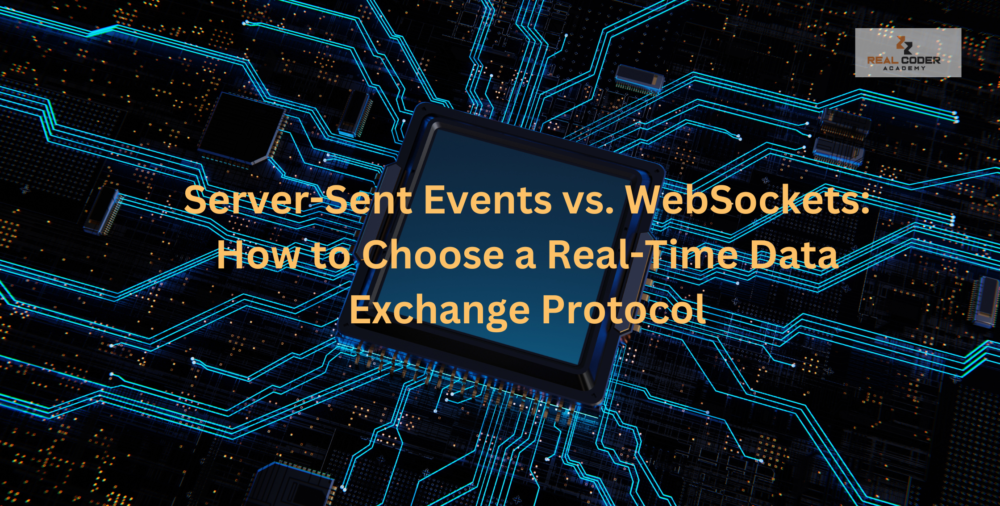Table of Contents
Server-Sent Events vs. WebSockets: In the fast-paced world of modern web applications, real-time communication has become a necessity. Whether you’re building live dashboards, multiplayer games, or collaborative tools, choosing the correct protocol for real-time data exchange can make or break your application’s performance and user experience. Two leading contenders in this space are Server-Sent Events (SSE) and WebSockets, each with distinct strengths and trade-offs. Let’s break down their differences and guide your decision-making process.
1. Communication Direction: One-Way vs. Two-Way
SSE is a unidirectional protocol where the server pushes client updates over a single HTTP connection. It’s ideal for live news feeds, stock tickers, or real-time notifications where clients don’t need to send data back.
On the other hand, WebSockets enable full-duplex communication, allowing both client and server to send messages simultaneously. This bidirectional capability makes them perfect for interactive applications like chat systems, multiplayer games, or live trading platforms where instant feedback is critical.
2. Protocol and Data Flexibility
SSE operates over standard HTTP/HTTPS, making integrating with existing web infrastructure easy. It supports text-based data (UTF-8) and leverages HTTP/2 for improved concurrency but lacks binary data support.
WebSockets use a custom protocol (ws or wss) over TCP, enabling text and binary data transmission. This flexibility is invaluable for audio/video streaming or file transfer applications.
3. Implementation Complexity and Overhead
SSE is more straightforward to implement due to its reliance on HTTP. Features like automatic reconnection and event ID tracking are built-in, reducing client-side code complexity. For example, if a connection drops, SSE clients automatically reconnect and resume from the last received event.
WebSockets require more effort, including handling protocol upgrades and managing persistent connections. Developers must manually implement reconnection logic and error handling, though libraries like Socket.IO simplify this process.
4. Scalability and Performance
SSE scales efficiently for high-volume, low-throughput use cases (e.g., broadcasting weather updates to thousands of clients). HTTP/2 support mitigates connection limits, but text-only data can be a bottleneck for bandwidth-heavy applications.
WebSockets excel in high-frequency, bidirectional scenarios (e.g., gaming or live auctions) but demand careful resource management. Persistent connections can strain servers under heavy load, though tools like Redis pub/sub help distribute messages efficiently.
5. Security and Compatibility
SSE benefits from HTTPS encryption and faces fewer firewall issues, making it enterprise-friendly. However, it lacks native support in Internet Explorer.
WebSockets require TLS (via wss://) to prevent vulnerabilities like Cross-Site WebSocket Hijacking (CSWSH). While broadly supported by modern browsers, some firewalls may block WebSocket traffic.
When to Choose Which?
Use SSE if:
You need straightforward, server-to-client updates (e.g., live news, dashboards). Automatic reconnection and HTTP compatibility are priorities.
Use WebSockets if:
Your app requires bidirectional interaction (e.g., chat, gaming). Binary data or ultra-low latency is critical.
Conclusion
The choice between SSE and WebSockets hinges on your application’s communication needs. SSE offers simplicity and scalability for one-way updates, while WebSockets provide unparalleled flexibility for interactive, data-intensive environments. SSE might suffice for projects like real-time analytics or IoT monitoring, but WebSockets are often the better investment for collaborative tools or live streaming.
By aligning your protocol choice with your use case’s demands, you’ll ensure a seamless, efficient, real-time experience for your users. Learn more…







Leave A Reply